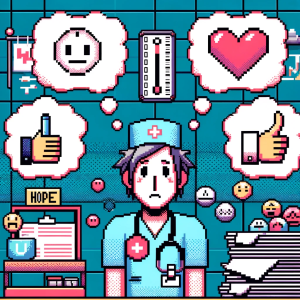
Understanding the Economic Impact of Suicide and Nonfatal Self-Harm in the U.S.: A Public Health Perspective
Suicide and self-harm are not only devastating personal tragedies but also represent a significant economic burden, as detailed in the article Economic cost of US suicide and nonfatal self-harm. This comprehensive study provides crucial insights into the financial costs associated with these public health concerns, and its findings have profound implications for public health practitioners.
The Growing Concern of Suicide and Self-Harm
The United States has seen a worrying increase in the age-adjusted suicide rate, now 35% higher than it was two decades ago. The COVID-19 pandemic has further highlighted the urgency of addressing these issues, particularly among the youth. This article not only examines the human cost but also quantifies the economic implications, thereby providing a holistic view of the impact.
Methodology: A Comprehensive Economic Analysis
The study employed the CDC’s WISQARS Cost of Injury system to analyze data from 2015-2020, focusing on suicides and nonfatal self-harm incidents. It considered several factors: medical expenses, work productivity loss, reduced quality of life, and the value of statistical life (VSL). This method offers a clear picture of the tangible and intangible costs of these tragedies.
Startling Findings: The Cost of Lost Lives and Opportunities
The results are staggering: an average annual economic cost of $510 billion. The majority of this cost arises from life years lost due to suicide, particularly among working-aged adults (25-64 years), who account for nearly 75% of these costs. In contrast, children and young adults (10-44 years) represent a significant portion of the economic burden due to nonfatal self-harm injuries. These figures underscore the profound impact on both the individual and societal levels.
Implications for Public Health Practitioners
For public health professionals, these findings are a call to action. Understanding the economic dimensions of suicide and self-harm can guide effective investment in prevention strategies. It’s clear that suicide prevention needs a multi-faceted approach, encompassing mental health care access, community support systems, and policy interventions.
Limitations and Future Directions
The study acknowledges certain limitations, such as potential underestimation of costs and complexities in quantifying life quality losses. This calls for more comprehensive data collection and analysis methods in the future to better inform public health strategies.
Conclusion: Towards a Proactive Approach
This study illustrates the enormous economic impact of suicide and self-harm, beyond the immeasurable human suffering they cause. It challenges public health professionals to use these insights to advocate for and implement effective prevention strategies. By doing so, we can hope not only to reduce these financial costs but, more importantly, to save lives and improve the well-being of communities across the U.S.
Join the Movement of Health Innovators – Subscribe for Weekly Insights!
Step into the forefront of public health innovation with ‘This Week in Public Health.’ Every edition brings you closer to the latest developments in research, community health, and advocacy. It’s more than a newsletter – it’s your resource for becoming an informed and active participant in the health community. Subscribe for free and join a network of individuals dedicated to making a lasting impact in public health!



